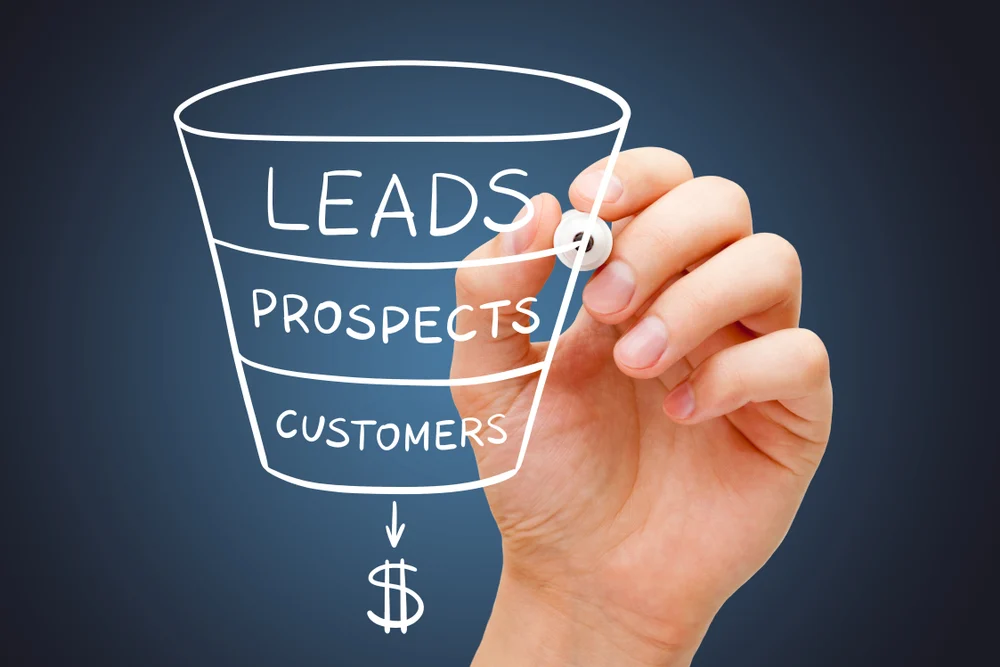In the world of sales and marketing, prospecting vs lead generation are two crucial strategies that drive business growth. While both aim to attract potential customers, they function differently. Understanding the difference between prospecting and lead generation can help businesses optimize their sales funnels effectively.
What Is Prospecting and Lead Generation?
Before diving into their differences, let’s first define prospecting and lead generation and explore their respective strategies.
Prospecting
Prospecting is the proactive process of identifying and reaching out to potential customers. It is often conducted by sales teams to find and qualify individuals who are likely to become customers. This process involves researching potential clients, initiating contact, and fostering relationships that can lead to sales.
Sales Prospecting Examples
- Cold calling potential clients to introduce products or services.
- Sending personalized emails to targeted prospects with a clear call-to-action.
- Networking at industry events, trade shows, and business forums.
- Direct outreach via LinkedIn Marketing Solutions to connect with decision-makers.
- Engaging with potential customers through social media interactions and discussions.
- Using CRM tools to track and manage potential customer interactions.

Lead Generation
Lead generation, on the other hand, is the process of attracting potential customers to your business using inbound or outbound marketing tactics. Unlike prospecting, lead generation focuses on drawing in prospects who have shown interest in your product or service by providing them with valuable content or incentives.
Lead Generation Examples
- Running paid ads with LinkedIn Lead Generation Service to attract potential leads.
- Publishing valuable content like blogs, ebooks, whitepapers, and webinars to educate audiences.
- Hosting industry-specific webinars and online events to generate qualified leads.
- Using SEO-optimized content and landing pages to capture organic traffic.
- Implementing lead magnets such as free trials, case studies, or consultation offers.
- Using LinkedIn Lead Generation campaigns to target professionals and businesses in specific industries.
- Leveraging referral programs and partnerships to generate high-quality leads.
What Is the Difference Between Prospecting and Lead Generation?
Prospecting and lead generation are both essential to a successful sales funnel, but they differ in approach, purpose, and execution.
Prospecting is an outbound, proactive process where sales professionals identify, research, and reach out to potential customers directly. It involves activities like cold calling, direct emails, networking events, and LinkedIn outreach. The goal of prospecting is to find and engage with potential buyers who fit the ideal customer profile. It is typically handled by the sales team and focuses on short-term, immediate interactions.
Lead generation, on the other hand, is an inbound, marketing-driven process that attracts potential customers through strategic content, SEO, paid ads, and social media campaigns. Instead of reaching out directly, businesses create valuable resources—such as blogs, webinars, and whitepapers—to capture the interest of potential customers. This process helps build a steady pipeline of interested leads over time, making it more of a long-term strategy.
The key distinction is that prospecting is an active, direct approach, whereas lead generation is a passive, attraction-based method. However, both strategies work best when combined—lead generation brings in potential customers, while prospecting ensures those leads are actively engaged and converted into buyers.
Executing Process: Prospecting and Lead Generation
Lead Generation Process
- Identify the target audience and define the ideal customer profile (ICP).
- Develop engaging content or offers that align with audience needs.
- Use LinkedIn Lead Generation Service and other platforms to generate leads.
- Capture lead information via forms, landing pages, or gated content.
- Nurture leads through email marketing, personalized follow-ups, and automated sequences.
- Qualify leads using data-driven insights and assign them to sales teams for further engagement.
- Monitor, analyze, and optimize lead generation strategies based on key performance indicators (KPIs).
Prospecting Process
- Build a targeted list of potential customers based on industry, location, and business needs.
- Research and qualify leads to determine their likelihood of conversion.
- Initiate direct outreach through personalized emails, LinkedIn messages, and calls.
- Engage with leads by providing valuable insights and solutions to their challenges.
- Set up meetings, demos, or consultations to further assess customer needs.
- Develop a follow-up strategy to maintain communication and move leads through the sales funnel.
- Convert qualified leads into sales and establish long-term relationships.
When Prospecting and Lead Generation Work Together
Now, here’s where the magic happens. The best sales teams don’t just pick one—they use both together.
Here’s an Example of How It Works:
- You write a blog post about "The Best Sales Tactics of 2024."
- Someone reads it and downloads your free eBook.
- That person is now a lead in your system.
- A week later, a salesperson reaches out on LinkedIn (prospecting).
- Since the person already knows your brand, they respond positively.
See how that works? Lead generation warms them up, and prospecting seals the deal.
How LinkedoJet Gives You the Best of Both Worlds:
When it comes to lead generation and prospecting strategies, LinkedoJet stands out as one of the best LinkedIn Lead Generation Service in the market, as it enables you to achieve both prospecting and lead generation without spending large amounts of time contacting people manually. The tool operates as a LinkedIn lead generation automation system that enables companies to develop connections with potential clients at large volumes through personalized communications.
LinkedoJet, being one of the best in Lead Generation Business, unites prospecting features which automate outreach to specific targets together with lead-generation benefits that use personalized follow-ups to engage potential clients. The automated solution offers you the best features of both approaches to generate continuous warm leads without requiring manual effort.
Final Thoughts
So, here’s the takeaway from this blog on Prospecting vs Lead Generation:
- If you want quick wins, do prospecting (cold calls, LinkedIn outreach).
- If you want long-term leads, focus on lead generation (SEO, content, social ads).
- If you want the best results, use BOTH TOGETHER.
Understanding the difference between prospecting and lead generation is key to optimizing your sales funnel. While LinkedIn Lead Generation helps attract high-quality leads, prospecting ensures that those leads convert into paying customers. Implementing both strategies effectively will help your Lead Generation Business thrive in a competitive market. By aligning marketing and sales efforts, businesses can create a seamless process that turns prospects into loyal customers, driving sustainable growth and success.
